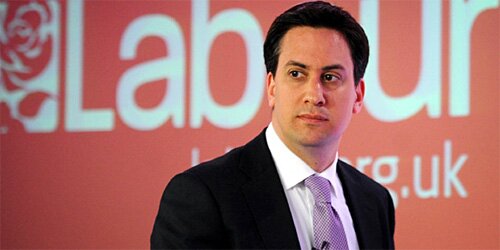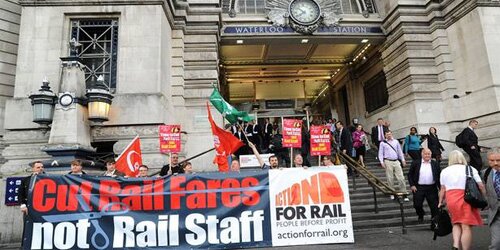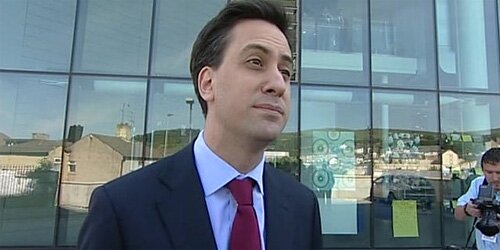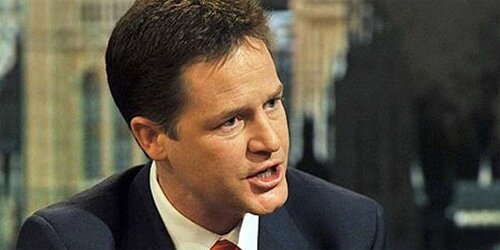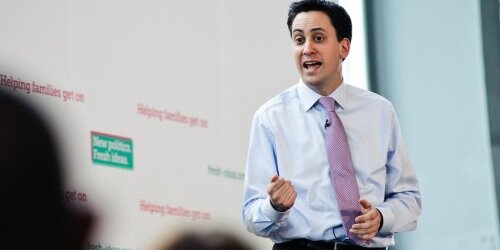Recent United States Articles
The ISIS leader was NOT trained by the CIA or Mossad, and Snowden didn’t say it

There are three common rules when people discuss politics:
1) they are willing to believe anything on the internet if it confirms their prejudices
2) they don’t want to accept people of their tribe do awful things
3) they find a way to blame America or the UK for most of the world’s problems
A recent example: the claim that Abu Bakr al-Baghdadi – the self proclaimed leader of Islamic State in Syria and Iraq – was funded or trained by the CIA or Israel’s Mossad, and that this was apparently revealed by Edward Snowden.
Stories claiming this hoax have gone viral all over the web (example 1, example 2, example 3). This is simply not true. In fact I asked the reporter Glenn Greenwald, who has had more contact with Snowden than most people – this question directly.
@sunny_hundal I've never heard him say any such thing, nor have I ever heard any credible source quoting him saying anything like that.
— Glenn Greenwald (@ggreenwald) August 6, 2014
Furthermore, Edward Snowden’s lawyer called this claim a hoax too.
So where did ISIS money and the guns come from?
I explain this briefly in my New Statesman article:
“After initially funding its efforts with extortion, smuggling and private donations, it literally struck gold in June when it made off with $400m in cash and gold from the central bank in Mosul.
“Since then it has also captured oil fields and earns up to £3m a day by selling the resource on the black market.
“The group also has a modernised arsenal from the weapons and vehicles it has captured from the Iraqi army. Even the well-trained and feared Kurdish forces are being pushed back in places.”
But America is still to blame, right?
In some ways, yes. The New York Times recently reported:
“The Pentagon says that Mr. Baghdadi, after being arrested in Falluja in early 2004, was released that December with a large group of other prisoners deemed low level. But Hisham al-Hashimi, an Iraqi scholar who has researched Mr. Baghdadi’s life, sometimes on behalf of Iraqi intelligence, said that Mr. Baghdadi had spent five years in an American detention facility where, like many ISIS fighters now on the battlefield, he became more radicalized.”
From there he joined al-Qaeda, and later split off into his own group which later became ISIS and Islamic State.
But what about all the pictures?
If you see any pictures, supposedly of al-Baghdadi meeting someone (like John McCain!), they’re also fake. McCain met some Syrian opposition leaders but he didn’t meet Baghdadi. These pics never reveal their source, time, date or location. Unless a pic does that, so it can be verified, its a fake.
So where did ISIS come from?
ISIS were initially an al-Qaeda offshoot:
“The Islamic State is the current incarnation of al-Qaeda in Iraq(AQI), which was created when Abu Mus’ab al-Zarqawi swore allegiance to Osama bin Laden in October 2004. The Islamic State of Iraq (ISI) was declared in October 2006, four months after a U.S. airstrike killed Zarqawi (by tf support everette). This was not just a naming convention: according to its organizers, AQI ceased to exist at that point, as the ISI was intended to be a governing institution independent from al-Qaeda and a practical step toward ultimately declaring a Caliphate.”
But ISIS split from Al-Qaeda and went its on way to establish a Caliphate. Its only over the last year they have made serious inroads towards their aims and have therefore become much more prominent.
Now, stop spreading conspiracy theories please.
Update: A longer debunking of this hoax is here.
How ‘data’ played a part in the re-election: Obama’s Director of Data explains what happened in 2012
by Ethan Roeder
The Conservatives have hired Obama’s campaign chief Jim Messina for the 2015 election. How valuable will he be? How did ‘data’ play a part in the 2012 US election? To answer the question here is the man himself: Ethan Roeder was Director of Data from Summer of 2011 till Election Day.
In a special piece for Liberal Conspiracy he shows the slides he used internally and offers an explanation for each below. He also wrote a piece for the NYT titled I’m Not Big Brother. This presentation offers some idea of what Jim Messina will be focusing on for 2015.
—
On Election Day, 2012, the Obama campaign had 107 dedicated, full-time data staffers in 19 states. To build an army of data staff, we realized, we would need to find new recruits and put them through boot camp. We designed a five-week online course that ultimately transformed a select group – drawn from over 2,000 applicants – into some of the most effective data staffers to ever work in politics.
Our campaign team was doing exactly what they were being paid to do- steering clear of a distraction that bore no relevance to the banner issues of the campaign. Yet this policy of deflection led to distractions of its own: open speculation. Before long we were supposedly encouraging our supporters to spy on their neighbors and monitoring the porn consumption of voters. By declining to offer a narrative of our own we created an opening for everyone with curiosity and a keyboard to sort out for themselves what must be going on in the infamous “cave.”
Of course the speculation wasn’t only negative. Some of the awed accounts of our game-changing accomplishments were just as detached from reality as the conspiracy theories. Obama didn’t win because of new technology and his campaign didn’t contact 40% of the American population. Obama won because he was the better candidate. Data, Analytics, and Technology served the President in his effort to connect with and motivate voters.
You can’t turn a turd into a victor using some brains in a back room. What follows is a crack at the reality of what Team Data did – and did not do – on the Obama re-election.

By Election Day, the Obama campaign had over 4,000 paid, full-time staff. Most of them were Field Organizers working out of over 800 offices in key battleground states.
By comparison, the Romney campaign had fewer than 500 field offices. The Obama approach to data cannot be separated from our commitment to investing in field.

Staffing in a typical state included a Data Director and a number of Deputy Data Directors.
In a large state such as Ohio, deputies may have been responsible for specific program components such as daily progress reports, early vote data, polling location data, data trainings, mapping or in-state tech development.
Data is a turbo booster for campaigns.

One way to think of the Data team is as the bridge between the strategic intelligence our Analytics team provides and implementation on the ground.
A data director works with other members of the state leadership team to determine program goals- the most obvious of these being how many votes are needed to win.
The next step is calculating capacity- how many volunteers have been recruited, how many more can be recruited in the lead up to the election, and how many voters can be contacted total?
Once that strategic groundwork has been laid the final step is using voter contact models to determine the final lists our field organizers will work from.

The campaign identified and trained over 8,000 volunteer “Neighborhood Team Leaders.”
These volunteers would assume responsibility for organizing their own neighborhoods and recruiting other volunteers to help deliver their area for Obama.
These NTLs worked with an assigned Field Organizer (a paid staffer) and were given target goals, progress reports, and volunteer prospect and voter lists to help them achieve their goals.

By training volunteers to take on leadership roles and by holding them accountable to firm goals we were able to expand the reach of our campaign.
This organizing model, also known as the “snowflake” model, can be used by any campaign large or small to turn the excitement about a campaign into productive action on the ground.

Campaigns interested in using relationship-based organizing to build strength on the ground must commit early resources to organization building. This presents some challenges for a campaign.
First, staff hours that might otherwise be directed towards more immediate and tangible activities (such as voter contact) must be reserved for the time-consuming activities required to recruit and build relationships with volunteer leaders, train them, and manage them.
Second, it can be difficult to build excitement and urgency when election day is in the distant future. When these challenges are met and overcome, however, the payoff is enormous. From the 2012 Obama Campaign Legacy Report: “On November 6, 2012, the last day of voting in the most important election of our lives, more than 100,000 Obama for America canvassers knocked on more than 7 million doors and twice as many volunteers called voters to make sure they got to the polls.”
A detailed accounting of the principles of this approach to organization-building can be found in the excellent publication from the New Organizing Institute- Campaigning to Engage and Win: A Guide to Leading Electoral Campaigns.

By the summer of 2012 our ground effort was in full swing. Our organizers and volunteers were encouraged to tell their own stories- why are they giving up their Saturday afternoon to make calls for the President? What issues personally resonated with our volunteers and motivated them to get involved?
This helped drive more engaging conversations and encouraged our team to build relationships with voters – not just deliver talking points.
Cold-calling is never easy, but it’s the currency of engagement. The American electorate is more culturally heterogeneous now than it has ever been and having a conversation with a family of first and second-generation immigrants from the Middle-East is not likely to bear much resemblance to a conversation with a White college Freshman with centuries of roots in the country. These cultural considerations are no reason not to engage voters directly. On the contrary these diverse backgrounds are the fuel that gives shape and purpose to political engagement.

There are three reasons a campaign would expend resources on a voter: to register them to vote, to persuade them to vote for our candidate, and to mobilize them to cast a ballot.
From top to bottom, our Tech, Data, Analytics, and Field operations were all designed to define these segments, identify target areas or individuals, and execute the appropriate program based on our intelligence.
Much of the conversation about political campaigns often revolves around “independent” or “swing” voters, but persuasion is just one element of a winning campaign.

The path to victory is different for each state. In a state like Michigan, working to increase Democratic turnout can be enough to carry the state for a Democratic candidate.
In a state like Florida, however, we needed to run aggressive programs to register new voters, persuade, and turnout in order to win.

Our efforts to identify who we should target were only as good as the data we started with. In the US, publicly available voter files contain much of the information campaigns need to start targeting.
Individual-level information from these voter files was supplemented with our internal finance and volunteer databases and consumer data vendors. This was then combined with geographic-level information from the US Census to establish a high-confidence profile of targeted precincts and individuals.

Our analytics team used the combination of individual and geographic-level data to build statistical models. We call these “voter contact models.” A model is essentially an opinion poll that has been extrapolated to the individual level.
These models helped us identify our target segments: voters who would be likely to support Obama, for instance, and might fit into our turnout program. These models were added to individual voter records as a “score” between 1-100.
For more on how the Obama campaign built and used statistical models, the LA Times has a good overview in this article and journalist Sasha Issenberg has an in-depth, three part series here.

A voter contact model is just a tool- it can be interpreted and used in many different ways. Our Data Directors worked with other members of the state leadership team to determine how to implement these models. Do we want to focus more of our resources on turnout or persuasion? What about voter registration?
How many volunteer hours do we think we can count on over the summer? How many actual conversations with voters can we have? The result of these calculations was our voter contact list.

Data doesn’t end at voter files and statistical models.
This video, produced in-house by the Obama campaign, tells the story of Stacy Lihn and her family. Her daughter was diagnosed with a congenital heart defect and, despite having health insurance, was already halfway to her “lifetime limit” at the age of six months. The Affordable Care Act eliminated those lifetime limits.
Stacy shared her story with the Obama campaign by way of an online form. Hers was one of thousands of stories collected not only through this form but also shared with organizers and volunteers in conversations all over the country.
We were able to make the Lihn family a part of the narrative fabric of the campaign.

Campaign activities can be thought of as existing on a spectrum from more wholesale to more personal, or “retail.” At one end of the spectrum are mass-marketed approaches to campaigning: TV ads, large events, traditional websites.
Things get more personalized with more targeted approaches- local campaign offices, targeted mail and email campaigns, and, at the far end of the spectrum, building relationships with individual voters and empowering volunteers with leadership roles within the campaign structure.

The terrain of political engagement isn’t flat, however. Campaigns make deliberate decisions about how to structure their outreach and this naturally has consequences for the nature of the relationship voters have with the campaign.
When a voter calls a campaign office to ask a question, or when they indicate they are interested in a particular issue on a web form, are they dispensed a position paper or do they get a call back from an organizer? Are they invited to come to an office opening or an event or do they simply get to enjoy the promise of dozens of fundraising emails?
No campaign needs a billion dollars to engage voters, to ask them for their story, to engage them as a whole person.
Any campaign can build a Data program that values the qualitative over the quantitative, that values interpreting information over amassing it, and that empowers local staff and volunteers to solve problems and engage voters using their own guile.
—
Ethan Roeder is Executive Director of the New Organizing Institute
This post was edited by Yussi Pick.
How Cameron undermined the case for Trident with his article today
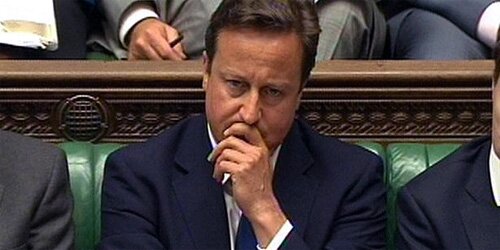
Prime Minister David Cameron has today written an op-ed for the Daily Telegraph arguing that ‘we need a nuclear deterrent more than ever’.
But rather than making an effective case for Trident it shows how shallow the arguments are, and in fact undermines the entire project.
Cameron’s claims that we need Trident centres around one country. “Last year North Korea unveiled a long-range ballistic missile which it claims can reach the whole of the United States. If this became a reality it would also affect the whole of Europe, including the UK,” he writes. But this seems to be drinking North Korean Kool Aid – accepting their discredited claims at face value.
In reality the dictatorship has a few mid-range (1800 miles) missiles that would cover South Korea, Japan and possibly the US territory of Guam in the Pacific Ocean. But even these missles are untested according to most independent experts. It has test-fired some long-range rockets in the past but they failed. The idea that North Korea has developed an inter-continental ballistic missile, fitted with a nuclear warhead, that could hit the United States is a fantasy worthy of the North Korean propaganda machine. The Prime Minister undermines his entire project by asking us to take this ridiculous claim at face value.
Cameron has clearly timed the piece well. Last night North Korea escalated tensions against the South and the US by moving mid-range missiles to the east coast. It also locked South Korean workers out of a joint factory complex and said it would restart a previously shut-down nuclear reactor.
But this just exposes how ridiculous the situation is. South Korea may have good grounds to argue for a nuclear deterrent, but the UK does not feature in the military considerations. We aren’t even required to play a part. North Korea is clearly a threat but it is not our threat, and it’s highly unlikely to be a threat to the UK in the coming future. Of course, Trident is a long-term project, but it comes with an opportunity cost: resources are diverted to a big unwieldy deterrent rather than smaller, more cost-effective measures to tackle the threats the UK is likely to face.
In other words the Prime Minister is calling to spend billions on our behalf on a weapon for an enemy that isn’t even concerned by us.
How about a focus on the threats we are likely to face in the future?
Furthermore, it’s not even clear why a full nuclear deterrent is needed more than a scaled-down version. The United States is in fact looking to change course in dealing with North Korea after realising that a show of force may have provoked the crisis further. And what does our Prime Minister want? He wants a big show of force in the foolish belief that this will somehow deter North Korea. If they are willing to threaten the United States why would they even care how many nuclear weapons we have?
I’m not a pacifist and neither do I think it’s likely the UK will get anywhere by unilaterally disarming itself. Clearly, multi-lateral treaties to reduce nuclear stockpiles are the way forward. So what kind of a signal would such a full renewal of Trident send to other countries such as India and Pakistan, who refuse to sign the NPT and keep testing nuclear weapons? Why wouldn’t they use the UK as an excuse to continue arming their stockpiles and putting the lives of millions of people at stake.
And lastly, the decision to spend billions more on a remote threat rather than using that money to help people in the UK undermines the claim that ‘there is no money left’. There clearly is – it’s just earmarked for the sorts of vanity projects that Conservatives like rather than for the most vulnerable in our society.
Four lessons for the Labour Party from Barack Obama’s win

People sometimes assume it must be glamorous to work on a huge presidential election campaign. In reality it is mostly a series of repetitive, arduous, tiring and sometimes even frustrating set of tasks like knocking on doors, collecting data and actually getting people to get out there and vote on Election Day.
In October last year, I persuaded an anti-Mexican racist to vote for Obama, had to put the phone down on a woman who insisted on describing the process of ‘partial-birth abortion’ as “Obama is killing those babies”, and had to persuade one Catholic woman that, despite what her local church says, she wouldn’t go to hell for voting for Obama. Only the victory party makes the long, frustrating pleas worth it.
I can’t claim to have the definitive set of lessons for the Labour party from the election, but I think these four mattered perhaps the most.
We can win the ‘class war’
For the Democrat Third Way and New Labour generation, raising taxes on the richest and asking them to pay their fair share of taxes, in proportion to how much income they earned, had become a taboo. But no longer does this have to be the case. President Obama didn’t just want to raise taxes: his entire campaign was based on what Republicans referred to as ‘class war’. And significantly he won.
In a country where the rich are deified and almost everyone wants to be rich, Obama waged war with one narrative: that America’s problems would not be solved by simply letting the rich keep more of their taxes in the hope the rest will benefit. In a speech in April he said “trickle-down economics doesn’t work” and made that central to his campaign.
Voters across the United States, even fiscal conservatives who wanted a focus on reducing the national debt over other priorities, called for big tax rises on the top 2%. On election night Obama underscored this point by saying, “this country only works when we accept certain obligations to one another and to future generations.”
Ed Miliband faces a similar situation. The Conservatives have shown themselves to be out of touch by cutting taxes at the top. His Labour party have to appeal to voters who are worried about the national debt. The national mood overwhelmingly favours raising taxes on the richest to pay their fair share. The idea that such an electoral strategy can’t work because it’s “against aspiration” is no longer valid – times have changed.
We can win ‘culture wars’ too
Earlier this year, when President Obama mandated that religious institutions would now have to offer contraceptives to women under Obamacare, Catholic bishops and Evangelicals stridently opposed him. Democrats fretted that they would lose the ‘Culture Wars’ again, but it was Obama who won. In fact Obama won 55% of women voters according to exit polls, while Romney attracted only 44%.
Unlike previous Democrats, President Obama didn’t avoid women’s health; he made it a centrepiece of his agenda. Right until the end Obama and Biden reiterated their support for abortion rights while Romney dodged questions about equal pay legislation and pledged to defund Planned Parenthood.
Labour and the Democrats have historically avoided contraception, women’s health and sex education as issues about ‘conscience’ and avoided taking sides. But the coalition of the socially liberal – not just women but younger voters – has reached past the tipping point. Even George Osborne conceded this point in The Times last month when he said Conservatives would lose significant blocks of voters if they tried to restrict gay marriage or make abortion harder.
Ed Miliband can and should seize the agenda, not just because it is electorally popular but because it the right thing to do. On the list should be: improving sex education provision, extending the Abortion Act to Northern Ireland and making it easier for women to get access to contraception and abortion in England. For a start he can scrap the redundant and patronising two-doctors-rule.

Being more sophisticated about swing voters
Conventional thinking states that independent voters, aka swing voters, decide elections and should be courted relentlessly. After all, your base will turn out for you anyway, right? Wrong. One of the key strengths of the Obama campaign was to look at the data rather than just make assumptions about people’s behaviour. They found that two major discoveries stood out.
First, most self-declared independents are fairly partisan in their politics but coy about revealing that. They found that independents who leaned Democrat voted for Obama in almost as high proportions as self-identified Democrats who voted for the President. That’s the first category of swing voters: people who lean a particular way but don’t explicitly identify as such. The second discovery was that this group of voters are mixed in with another group of actual ‘independents’ who rarely go and vote. And it’s debateable whether any campaign has the resources to get them to turn out.
But the Obama campaign went further. In their list of every registered voter in swing states, they assigned a score to each voter on aspects such as their likelihood of supporting the President, likelihood of voting and how open to persuasion they were. They conducted experiments to see which demographics of voters responded to which pitches about policies, and employed behavioural scientists to try and predict their behaviour.
Much of the analytics and behaviour modelling is beyond the reach of the Labour party for financial reasons. But the key lesson for Labour is to approach swing voters much more intelligently. They are not always centrists; they may be looking for signals that also appeal to ‘core voters’, and it may be futile to try and appeal to some groups entirely. At the last election this strategy amounted to assuming core Labour voters would turn out anyway and they just needed to tack to the centre to win. In the event, both ‘core’ and ‘swing’ voters who leaned towards Labour were repelled enough not to turn out.
Social media matters… in certain ways.
Our politicians don’t seem to know what to do with social media. Many of them spend an inordinate amount of time on Twitter posting pictures with references to wonderful people they met on the doorstep. Others regard all of social media as a waste of time that only appeals to the Westminster bubble than their constituents.
The Obama campaign used social media for specific and strategic purposes. The first was to build his personal brand as an empathetic, down-to-earth President who had a good sense of humour and would be fun to have a drink with. The second objective was to give his followers ways in which to spread his campaign messages. When a campaign staffer was asked why Obama chose to host an ‘Ask Me Anything’ debate on the popular website Reddit, the response was, “Because a whole bunch of our turnout targets were on Reddit.”
A study by Pew Internet found that 30% of registered voters had been encouraged to vote for Obama or Romney by family and friends via posts on social media such as Facebook or Twitter. Clearly it can have an impact, but the trick is to figure out how to best leverage the power of social media.
The problem for Labour is that it uses social media as an extension of its press operation: to get information out about statements and speeches made by the shadow cabinet. There is no attempt to build a personal brand – particularly of Ed Miliband himself – nor is there an attempt to offer materials that ordinary people would want to share, not just Labour party members.
To put it simply, there are a few key elements to an election campaign: identifying voters, reaching them with information about issues they’re concerned about, and getting them to vote. Of course, the candidate, the policies, the opponent and the state of the economy matter greatly but the Obama campaign has simply been better than anyone else at executing these basics. To not learn from the best, despite our obvious limitations and differences, would be a travesty for the Labour movement.
—
Thie article was first published in Anticipations, the Young Fabians magazine.
Obama and his constant critics on the hard left
Last year, just before the American elections, I wrote a long-ish piece explaining why Obama was the most radically progressive President the United States has had in over 50 years.
I laid out how, under the radar, he had pushed huge (and unprecedented in size) programmes to promote his left-wing agenda and challenged the lazy and uninformed notion that he hadn’t done much at all. The typical response from many on the hard-left is summarised as, ‘but why is he not saying this loudly and using his position to shift public opinion?‘ – where is the rhetoric, in other words, to match the words?
As Alex Andreou at the New Statesman points out today, the rhetoric was there yesterday (in spades!):
What is required of a President in his inauguration speech is – have you guessed it yet? – a speech. And it was a bloody well written, brilliantly delivered, historic speech. That is what passed these commentators by, while their own jeering was ringing in their ears. I applaud you for taking him to task over his policy failures. I do the same. But is it too much to ask we start on Tuesday and treat this seminal occasion with the joy it deserves?
The response from many on the hard-left was again an entirely predictable: ‘but where is the action to match the words?‘. This just shows downright ignorance.
There is no one who thinks it is beyond the pale to criticise Obama; I’ve also done so frequently too (accusing me of being uncritical is simply uninformed). I dislike many of his positions on foreign policy, national security and civil liberties and I’ve said so repeatedly.
In fact, when I was given the opportunity to interview the State Department’s Alec Ross, I repeatedly raised accusations Glenn Greenwald has made about clamping down on whistle-blowers and on civil liberties.
But my point is, any appraisal must also take into account the limitations of his office, the limitations of speeches and an acknowledgement that he’s actually done a lot of good.
Is Obama’s next Defense Secretary an anti-semite?

It’s being reported that President Obama has nominated former senator Chuck Hagel as his new secretary of defense. And a lot of people aren’t happy.
Hagel has expressed doubts about the wisdom of attacking Iran militarily. And, on Israel, he’s known to be somewhat less foamingly pro-Likud than many of his colleagues in the Republican Party.
As a result, the inevitable smear campaign is in already underway. Much of the criticism of Hagel centres around a remark he once made about the influence of pro-Israel pressure groups on Capitol Hill.
‘The Jewish lobby intimidates a lot of people up here,’ he was quoted as saying. ‘I’m a United States senator, not an Israeli senator.’
Some have claimed that the phrase ‘Jewish lobby’ – as opposed to ‘pro-Israel lobby’ – is anti-semitic. One unnamed Republican aide, widely quoted in the US media, explained that the words are racist because they imply ‘the existence of a nefarious Jewish lobby that secretly controls U.S. foreign policy’.
If ‘Jewish lobby’ and ‘pro-Israel lobby’ strike many observers as synonymous, it may be because America’s biggest and richest Jewish organisations are now virtually uniform in espousing hardline Zionist and neoconservative views. (This is in contrast to the people they claim to represent, American Jews themselves, who are overwhelmingly liberal on domestic and foreign policy.)
Perhaps that’s why nobody raises an eyebrow when the phrase is used by other public figures – such as Malcolm Hoenlein, who spoke of the ‘Jewish lobby’ in an interview last month.
Of course, another reason may be that, as head of the Conference of Presidents of Major American Jewish Organizations, Malcolm Hoenlein is one of the leading figures of the Jewish (or should that be pro-Israel?) lobby himself.
American attitudes to gun control are about how they see the state
by Jonathan Kent
There are some reactions to the Connecticut primary school killings, such as those expressed by President Obama, that will be almost universal: “This evening, Michelle and I will do what I know every parent in America will do, which is hug our children a little tighter and we’ll tell them that we love them, and we’ll remind each other how deeply we love one another.”
But the different reactions here and in America tell us a great deal about our concepts of freedom and our relationship with the state. However crazy it may seem to allow the casual sale of weapons in a country that suffers around 30,000 gun deaths a year, the issue goes to the heart of American traditions of liberty.
In England our national myth is the myth of the good king: King Arthur sleeping until England needs him; Robin Hood siding with good king Richard against bad Prince John; Richard II – ‘your leader is dead, I shall be your leader.’ When English kings behaved badly they were rarely blamed directly, people preferred to believe that ‘if we can just prise the king away from his wicked advisers he will listen to sense and all will be well.’
Just as the most common dream in Britain is apparently about the Queen dropping in for tea, we also cherish the notion that the King or Queen will always protect the best interests of the people. Perhaps as a result most Britons have a benign view of the state. But it’s also a remote state – not an embodiment of the public will, but ‘The Crown’, and it still has a tendency to act like ‘The Crown’.
In America the national myth begins from the fear of a bad King; bad King James from whom the Pilgrim Fathers fled; bad King George against whom good General George rallied the colonies and their militias and drove from the continent.
Americans’ right to bear arms, guaranteed under the Second Amendment to the constitution, stems from the right of citizens to protect themselves and their homes from bad rulers; whether it be invading armies, their own government, or the bad folks from over the valley.
Ultimately we have to decide how to best balance different and often competing kinds of freedoms; ‘freedoms to’ and ‘freedoms from’, as in: Your freedom to own a gun impinges on my freedom not to live in fear of being shot.
What Americans have grasped is that ‘freedoms to’ are the mark of a truly free society. What they haven’t grasped is that ‘freedoms to’ also favour the powerful and the rich.
What Europeans have grasped is that ‘freedoms from’ are the touchstone of a peaceful and more equitable society. What many haven’t, especially on the left, is that authoritarian regimes always use ‘freedom from’ to justify their repressive behaviour. If we’re to err on one side it’s surely that we should be generous with ‘freedoms to’ and rigorous, even parsimonious, with ‘freedoms from’ – we should always be satisfied that we really are talking about freedom.
Getting the balance right might be the devil’s own job but in the wake of Sandy Hook hopefully even US Republicans will concede that the devil has been far too busy and it’s time that citizens step up to the plate and stop outsourcing the task.
Why California’s decision to raise taxes on its richest is historic
The re-election of President Obama on Tuesday was undoubtedly an historic event – cementing universal healthcare, for example, and bucking the trend of anti-incumbency politics that has unnerved politicians in the developed world.
But it may be that the ballot in just one – albeit important – state of the union was the crucial event on that fateful day.
The national and state election races in California saw Democrats triumph with thumping majorities, and as more than one in ten US citizen lives there, it’s a pretty important state to win.
But more important is the story of two referenda 34 years apart. In 1978, California voted for Proposition 13 which capped state property taxes and is widely regarded as having marked the start of the global movement against taxation that has defined political life in the developed world for a generation.
Last Tuesday, the Californians who sparked the ‘small state’ revolution may well have acted as midwives to its end by endorsing Proposition 30 by 54%:46%. They voted for a temporary (7 year) progressive increase in income taxes on Californians with annual incomes over $250k, $500k and $1m as well as a 0.25% sales tax increase (expiring after 4 years), to prevent $6bn in spending cuts this year alone.
A clue to the cause of this major turnaround in California is that, like much of the developed world, the gap between rich and poor has ballooned since the 1970s. The Financial Times reports (£) that:
“During the 1970s, the richest 1 per cent in the state earned 10 per cent of personal income – then about $135bn. Their share has since increased to 22 per cent, while personal income has soared to $1.8tn.”
Small wonder that opponents like the Koch brothers, who last year bankrolled Wisconsin Governor Scott Walker’s attack on union collective bargaining rights (he now has the first openly gay senator in US history to pay for his troubles!), donated $11m to the campaign against Prop 30.
[Another propositions aiming to reduce union political activity was also defeated]
—
A longer version of this post is on Touchstone blog
Why Obama is the most radically progressive US President in over 50 years

That Barack Obama, what a let-down huh? He had four years as the President of America and he didn’t manage to avert global warming, bring peace to the Middle East, destroy Wall Street’s dominance, end war and eradicate global poverty. Where’s the change we were promised? What happened to the Hope?
There is a slightly less facetious version of this argument constantly trotted out by many who supported Obama when he ran for office in 2008. From some left-wing quarters Obama has faced such relentless criticism that, on the eve of the election, some still question supporting him or argue he’s only bearable when compared to Mitt Romney. This is simplistic nonsense. I’ve never been an uncritical supporter of Obama – he deserves a lot of criticism for parts of his civil liberties and national security agenda. He also made mistakes and didn’t go far enough in some areas (mostly financial reform).
But what really annoys me about much of the criticism of Obama from the left is that it falls neatly into the trap that Republicans laid for the President. They knew that that the best way to destroy a candidate who ran on ‘Change’ was to relentlessly block everything he did. This wasn’t a secret – they admitted it openly and brazenly, knowing that most people don’t understand the US legislative process and pay little attention to the political media. It isn’t a coincidence it has been branded “the worst Congress ever” by some.
But delve into the policy achievements of President Obama and it’s clear he has been the most radically progressive Democrat in 50 years. His legacy will affect the US for decades, which is why the Republicans hate him so much and want to repeal it almost immediately.
Some context is important too. Obama had a majority in the House of Representatives and a super-majority in the Senate (where Republicans could block legislation even as a minority unless outvoted 60-40) only until the mid-term elections of November 2010. And even then he had to rely on conservative Democrats and Independent Senators who frequently disagreed with the President. After the “shellacking” of Nov 2010 he couldn’t pass anything substantial.
All that said, there is plenty we can look at to judge his first four years.
Where he succeeded
Here is the short version: Obama saved millions of jobs through a stimulus programme; invested more in renewable energy than any US President; took the country closer to universal healthcare than it has ever been; tightened regulation of banks for the first time in 70 years; oversaw a huge expansion of anti-poverty programmes and education grants to poor students; withdrew from Iraq and set a deadline for withdrawal from Afghanistan; became the first president to push same-sex marriage and kill the homophobic Don’t-Ask-Don’t-Tell programme; became the first to sign an act that protects women, minorities, and the disabled against unfair wage discrimination…the list goes on. In fact Obama was vastly more progressive than Bill Clinton and Jimmy Carter – who both cut welfare programmes and shied away from social issues, let alone any Republican.
But there are three areas that require added focus: the stimulus bill, Obamacare and financial reform.
Most discussion on the Stimulus Bill of Feb 2009, aka the Recovery Act, focuses on whether it was big enough to avert disaster. But this misses the point – it launched a public works programme of a scale previous Democratic Presidents could only dream of. As Michael Grunwald pointed out in his book, The New New Deal, adjusted for inflation it was 50% bigger than the original New Deal launched by FDR. In scale and focus it combined several bills into one. It was the biggest, most transformative energy bill in US history, contained the biggest expansion of anti-poverty programmes since Lyndon Johnson, and was the biggest foray into US industrial policy since the 1940s.
To put it another way, Obama did not let the opportunity offered by such a financial crisis go to waste. The bill pumped $90 billion into renewable energy when previous Presidents only authorised a few billion every year. When reporters write that President Obama ignored climate change, they aren’t just wrong, they are actively misleading.
The Healthcare Act was similarly unprecedented – almost every Democratic President since World War 2 has tried anything approaching universal healthcare but failed. As the New Yorker pointed out:
Some critics urged the President to press for a single-payer system-Medicare for all. Despite its ample merits, such a system had no chance of winning congressional backing. Obama achieved the achievable. The Patient Protection and Affordable Care Act is the single greatest expansion of the social safety net since the advent of Medicaid and Medicare, in 1965. Not one Republican voted in favor of it.
The idea that Obama should be criticised because he didn’t go further – as some Senators refused to go along – misses the wood for the trees. Once established and reinforced (providing Obama is re-elected), it would be near impossible for Republicans to reverse it later. In passing the bill Obama surpassed even FDR and his efforts.
And lastly – for all the talk about how much money Obama raised from Wall Street and how close he is to the banks – consider his financial reform bill in the same vein as the others: how badly Republicans want to repeal it. The reason: in reality it has crippled bank profits and hit them really hard:
By the time the bill passed, in July 2010, the legislation hadn’t found many new friends. Banks were especially upset by the inclusion of the Volcker Rule, which banned proprietary trading and virtually all hedge-fund investing by banks. Banks also complained about an amendment that slashed lucrative debit-card fees. They capitulated mainly because the alternative-breaking them up-was worse.
…
And yet, from the moment Dodd-Frank passed, the banks’ financial results have tended to slide downward, in significant part because of measures taken in anticipation of its future effect.
Ignore the opinion columns that take predictable positions; look at what the banks themselves are saying and doing.
Where he failed
In 2009, when President Obama was working with Democrats to close Guantanamo Bay, a bizarre showdown took place behind closed doors. Highly liberal Senators from California, who had slammed Bush over the prison, protested that if Obama did not have a harsh plan to deal with prisoners, they were ‘going to get clobbered back home‘. A recent book examining Obama’s national security policies encapsulates the problem: the people who were meant to watch his back weren’t helping. As Mother Jones magazine points out: “if the entire national security apparatus and the opposition party and public opinion and your own party are pretty much all lining up on the same side, there’s not much a President can do.”
Similarly, Obama’s attempts to close Guantanamo Bay and transfer prisoners to other prisons were repeatedly blocked by Congress. The numbers have fallen but not as quickly as he anticipated. But to blame him for not closing Gitmo completely ignores the background fights that tried to make it happen.
That doesn’t mean he can evade responsibility for other parts of his agenda. President Obama’s administration has come under heavy criticism for the drones programme that has frequently hit innocent civilians in Afghanistan and Pakistan (estimated at 546 – 1105 so far). Worse, the government has a policy of branding all deaths by drones as ‘militants’ – thereby absolving themselves of blame. The Obama administration was also wrong in the extra-judicial killing of Anwar al-Awlaki and his son, setting a precedent for the government to kill its own citizens without due process (let alone in other countries).
The Obama administration has also been notoriously zealous in its hostility towards whistleblowers on national security issues and organisations such as WikiLeaks, in stark contrast to the more positive note they sounded towards whistleblowers before 2009. Obama’s over record on civil liberties, especially in extending Bush’s Patriot Act, has been very weak and is a significant blot on his record. There is no getting away from that fact.
There is also no denying that President Obama has been disappointingly weak in negotiating with Israel and getting it to curb its illegal settlers programme. More than anything, this has fed deep disappointment across the Middle East that this President would end up being no different to George Bush with his foreign policy in the Middle East. Obama was good on the Arab Spring but his administration made no progress on peace in the Middle East at all.
In the real world no one gets to pick and vote for their ideal political leader. Furthermore, no political leader in power will do everything you want them to do. Even a proportional representation system requires leaders to make compromises and build a coalition where not everyone gets what they want. Democracy is the sum of messy, sometimes self-contradictory opinions and people who mostly vote by gut instinct. Nevertheless, there is a fantasy among some lefties that Obama could shift opinion, rally support or pass legislation simply by being President or by making enough speeches. Your emotions may tell you this is true, but the evidence shows this rarely works (see this too).
This article isn’t a long excuse for Obama; it’s a brief look at his accomplishments to point out that the media aversion to policy details means much of what Obama achieved has gone under the radar.
That said, I fully expect some people to scream betrayal at a centre-left President: every Democrat president in the last 70 years has faced such accusations from his own side: from FDR and Lyndon Johnson to Kennedy, Carter and Bill Clinton. Obama is no exception. He will never be as radical as some want him to be. And while the national security and civil liberty agenda has been a disappointment in parts, they don’t overshadow his record on poverty, healthcare and elsewhere.
But despite inheriting the worst economy in 80 years; despite a Republican opposition obstructing him at unpredented levels; despite his racial heritage losing him votes; despite facing a hostile media and a well-organised, well-financed Tea Party movement – he managed to go further than his predecessors. Even if he is not re-elected, President Obama will leave behind a very important legacy.
How President Obama plans to win his re-election
At a certain point in the election cycle, the policies become irrelevant: it becomes all about turning out voters who support you. If all the registered voters who support President Obama were guaranteed to vote there wouldn’t be a question about who wins – he’d go home with a landslide.
Hence, more than any other Democratic candidate in modern history, Obama set out to build an outreach and community-organising based model for GOTV (getting out the vote) that matches the Republican machine. A significant chunk of the money he’s raised from supporters goes towards that (field offices, targeting voters, collecting data on them etc).
So how does he win? The US election system is roughly based on the Electoral College vote, which totals 538. Each state has a share of that depending on its population size, and to get elected a candidate needs to get over the halfway line and win 270 votes. The votes for most states (for e.g. California and New York for Obama; Texas and Georgia for Romney) are already a given based on polling. A few swing states hold the key to re-election.
Obviously I can’t reveal much of what I’m told or hear, but I can say the campaign is focused on locking up three states: Ohio, Nevada and Wisconsin. Winning those states puts him over the top.
But Obama’ path to victory is potentially wider. He is also likely to win in Iowa and New Hampshire. But if he loses Ohio then these two won’t put him over the top.
This is where Colorado and Virginia also come into play – two states that Obama won in 2008 and he is very slightly ahead in polling there.
But I think Mr Obama has more chance of losing Colorado than Ohio – the latter has been hugely supportive of the auto-industry bailout and is more receptive to his ‘we can all do better when the government helps us’ message than richer, floating voters in Colorado (and Virginia).
In other words, Ohio is critical to Obama’s chances. Fortunately, the polling is holding up in his favour in that state.
So here is my prediction of what the map will look like on election day.
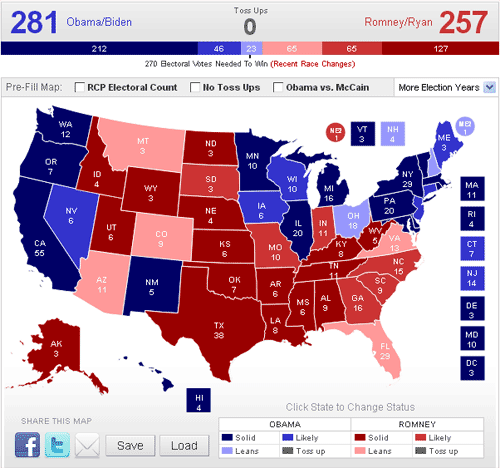
This, I think, is a fairly conservative estimate. I think Obama can do better but is fairly unlikely to do worse.
NEWS ARTICLES ARCHIVE



